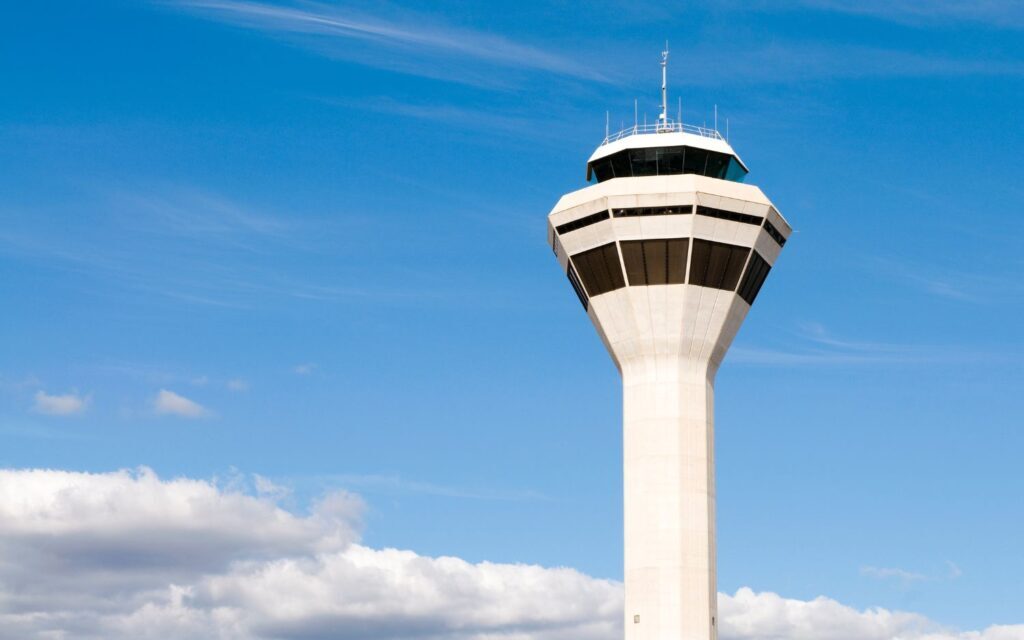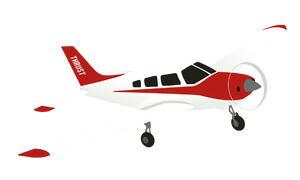At first glance, the career paths of airline dispatchers versus air traffic controllers might seem pretty similar. But in the aviation world, the two jobs are actually incredibly different.
They have different responsibilities, work in entirely different environments, and have a different set of considerations for who might be a good fit.
Here’s a look at dispatchers compared to controllers, including a little about each job, how you can enter these fields, and which one might be right for you.
What Does an Airline Dispatcher Do?
Dispatchers are airline employees who work behind the scenes to assist flight crews with their pre-flight planning.
This includes things like weather, routing, fuel loading, weight and balance calculations, and performance calculations.
In essence, the dispatcher will compile all the necessary information about the flight, ensure it meets Federal Aviation Regulations (FARs) as well as company policies, and then sign it off as good to go before handing it over to the captain (pilot-in-command).
The position of a flight dispatcher is required for US Part 121 airlines.
But the exact duties and workload of the position depend significantly on the airline in question. A major carrier might employ dozens of dispatchers, and each one might focus solely on the same set of routes every day.

At smaller companies, one dispatcher may have to handle everything, and the job may also involve additional tasks such as crew or maintenance scheduling.
Airline dispatchers typically work at the company’s headquarters, in the flight operations office. To be eligible for the position, candidates must hold a valid FAA dispatcher’s license, although some airlines may require additional qualifications or experience.
To obtain the license, individuals must complete a training course and pass both a written and a practical test. Once hired by an airline, that airline will provide specific training on its procedures and equipment.
What Does an Air Traffic Controller Do?
In contrast, air traffic control specialists (ATCSs) work with all airplanes in the sky to ensure they are safely separated from one another.
They communicate directly with the cockpit via constant voice transmissions and provide pilots with instructions, such as the altitude to maintain and the heading to follow.
In most cases, air traffic controllers in the US are federal employees working for the Federal Aviation Administration (FAA). Air traffic controllers work in one of three different types of facilities around the world:
Air traffic control towers (ATCTs or “tower”) — Separate aircraft on the ground at the airport, on the runways, and within about 4 miles. These are the only controllers who physically see the aircraft they work; all other controllers work solely from radar screens.
Terminal Radar Approach Control (TRACONs or “approach”) — Separate aircraft as they arrive and depart from major airports, usually between 4 and 20 miles away and below 10,000 feet.
Air Route Traffic Control Centers (ARTCCs or “center”) — Separate en route aircraft between airports, and most traffic above 10,000 feet.

In addition to these facilities, there are offices for weather and nationwide route planning.
Considering that most controllers are federal employees, the job is considerably different from working for an airline.
For one thing, you can’t just switch employers, although you can apply to move from one facility to another. Another notable difference is that the hiring and training process is highly standardized and regimented.
Air traffic controllers usually follow one of two paths to get the job.
Some come from the military, which trains its own controllers. Others attend an approved school for it, which makes them eligible to apply for positions at the FAA.
Schools with the program are called AT-CTI (Air Traffic Collegiate Training Initiative).
Occasionally, the FAA may also open positions to the general public. FAA controllers are required to hold a valid medical certificate, be under 31 years old when they apply, and undergo initial training in Oklahoma City.
Dispatcher vs. Air Traffic Controller as a Career
While there are certainly similarities between a career as a dispatcher and a controller, there are also significant differences.
As discussed above, there are some differences in the paths you must take to get the job and your responsibilities. But the jobs also vary in their working environments, workload, and salary.
Firstly, dispatchers will work in an almost traditional office environment at the company headquarters.
You’ll communicate with crews primarily through text systems, phone, and occasionally radio. While you might occasionally be called to assist crews during flight, most of your work occurs before they depart, so your actual interaction with air crews is limited.
Controllers, on the other hand, work in unique environments.

Towers have a great window view, but TRACONs and ARTCCs are windowless bunkers, dark and full of glowing radar screens.
It’s not a place where everyone would be comfortable or happy. The working environment can also be intense, high-stakes, and require complete concentration. As careers go, an air traffic controller is considered one of the most stressful jobs you can have.
One of the most attractive aspects of a job in ATC is the salary, however.
It remains one of the best-paid government positions, with average salaries ranging between $100,000 and $150,000, and senior positions at busy facilities regularly exceeding $200,000. Controllers must retire by the age of 56, and their pension package is solid.
On the other hand, airline dispatcher salaries are typically lower, with early salaries ranging from $60,000 to $95,000. However, if you are able to get a job with a major airline in the US and stick with it, the pay can exceed $170,000 per year.
Benefit packages vary from airline to airline but most airline dispatchers receive flight benefits.
Which Career Is Right For You?
Before you dive into either career, you’ll want to do as much research about them as you possibly can.
Visit the school programs in your area that offer courses and ask as many questions as you can. Meet professionals in the field, and (you guessed it) ask as many questions as you can.
For most people, the working environment and responsibilities of the career will dictate which job they choose. But there are a few other things to consider.
Air traffic controllers have unique duties that require applicants to possess a specific skill set.
Look into the AT-SA (Air Traffic Skills Assessment) exam that is given to new applicants. Sample tests are available online for purchase.
It’s focused on your aptitude for the types of problem-solving, quick decision-making, and spatial thinking that are required to be a successful air traffic controller.
Passing that test is one of the first steps toward an ATC career, but it’s not a test designed to be studied for.
In addition to the aptitude test, there are disqualifying medical conditions that apply to controllers. Any history or diagnosis of conditions that can impair judgment or cognitive function will mean you cannot hold the position, along with a handful of other things, like color blindness.
Comparatively, the requirements for dispatchers are more relaxed. There are no medical requirements or cognitive tests; however, airlines have their own requirements and hiring practices to consider.

